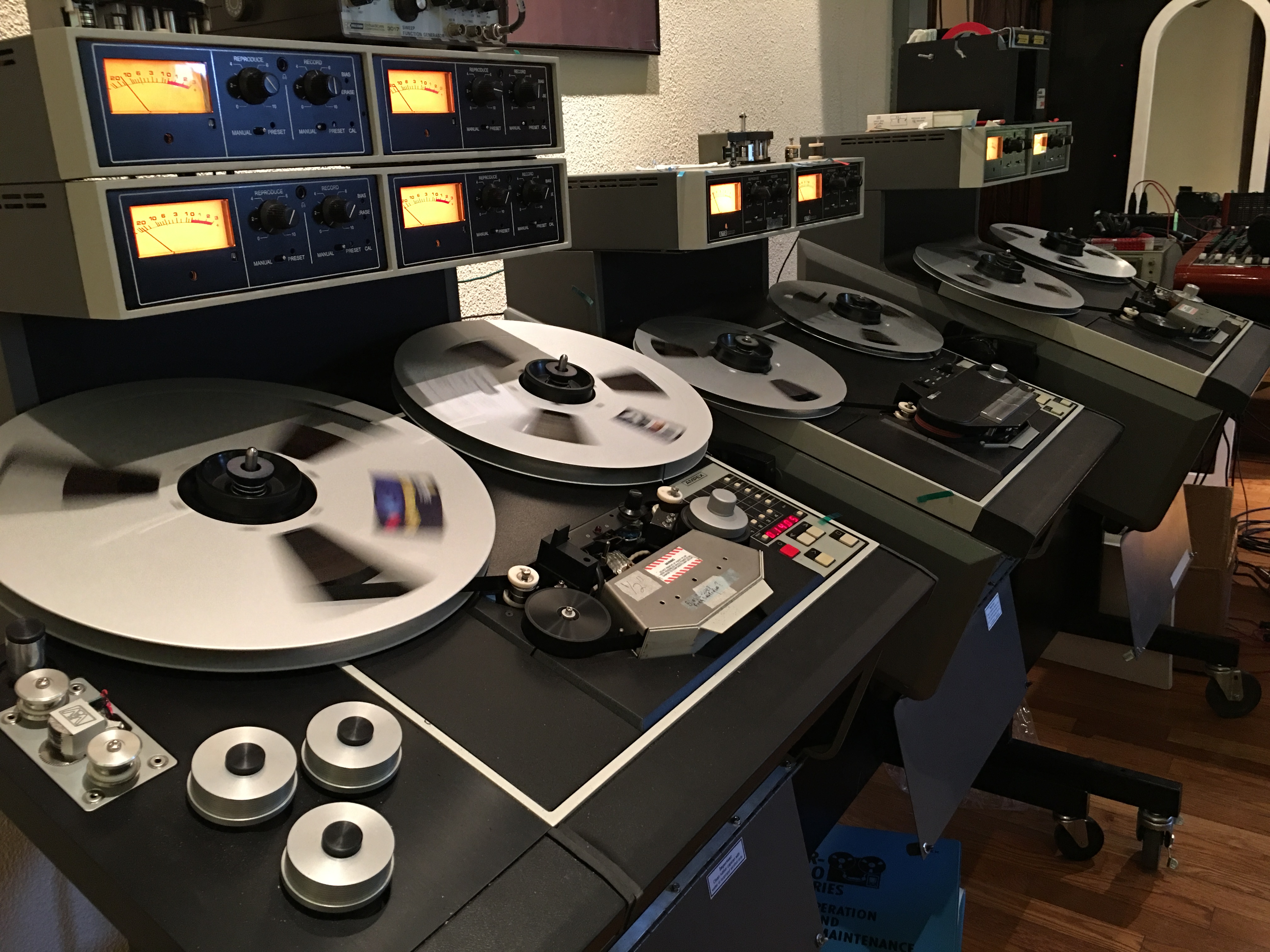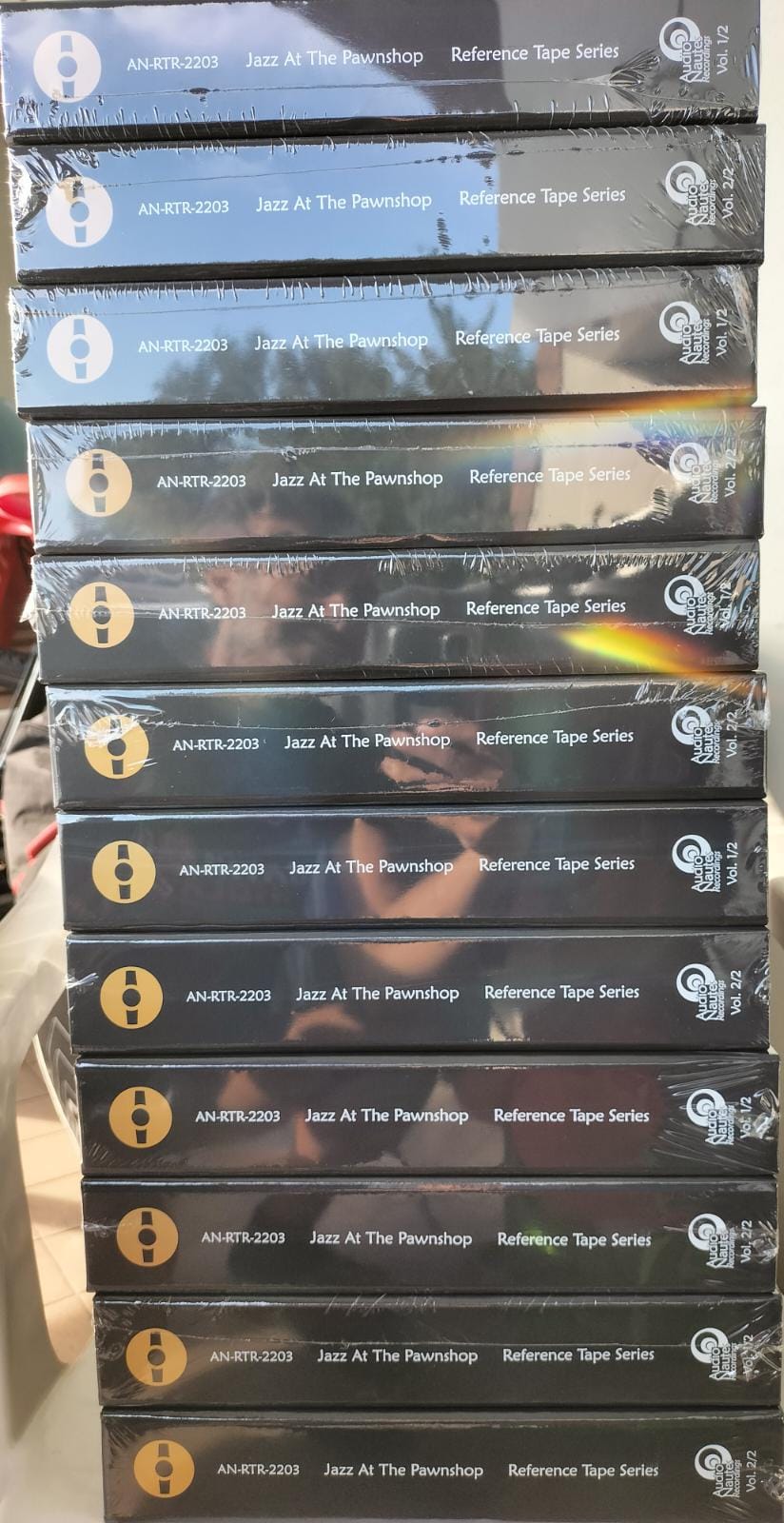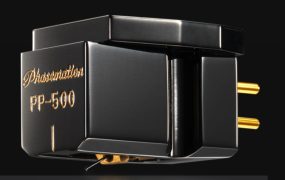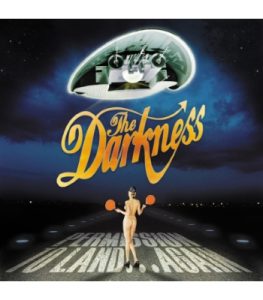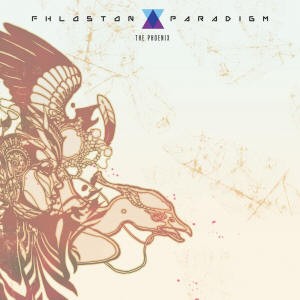"It's so easy to fall in love."
Buddy Holly and Norman Petty might have just as easily been writing about reel-to-reel tape as finding one's soulmate (although tapes are not for fools!). Everything from the machines' "retro" look to the "coolness" factor to the feel of spooling up the tape to the look of the tape boxes sitting on the shelves to the thrill of the music as it was truly intended to be heard just creates that ever-so-elusive goose bump factor that audiophiles cherish oh-so-much says buy me. As the late Mike Spitz of ATR Services said, "Once you hear tape, there's no going back!"
It's been a bit over a decade since the triumvirate of Dan Schmalle, Paul Stubblebine, and Mike Romanowski started The Tape Project and close to that amount of time since I began covering the tape renaissance. Many people at the time, in fact, questioned Dan, Paul and Michael's sanity when they founded The Tape Project. Even this trio wondered out loud if they weren't crazy. Luckily there were many diehard tapeheads out there like me, the late Winston Ma, David Robinson, Greg Beron, Ki Choi, Charlie King and a host of others who had faith in and stuck by The Tape Project through thick and thin. Time proved Dan, Mike, and Paul right and a decade or so later, the reel-to-reel tape market has exploded with 26 different companies from around the world releasing both new and classic titles on reel-to-reel tape (a list of my top ten reel-to-reel tapes along with other recommended releases are on my high-end audio bulletin board Audionirvana.org; see HERE). Nowadays you can't go to a high-end audio show without seeing Greg Beron of United Home Audio—and often many other rooms—using reel-to-reel tape as a music source. Greg's legendary late night, audio show, reel-to-reel tape sessions are always standing room only. Ready for even better news? At least four other companies—including two very well respected audiophile labels—are also seriously considering releasing reel-to-reel tape. The more, the merrier!
There's now so much interest in this antiquated medium that one and possibly more companies are looking at building new tapes machines. In the interim, there's still no shortage of tape machines and several companies including Doshi Audio and King-Cello produce outstanding outboard tape stages for those seeking the ultimate in reel-to-reel sound quality. (Interested newbies should check out this old Positive Feedback article see HERE for pointers on getting started in the reel-to-reel hobby.)
Acoustic Sounds, "the largest supplier of audiophile recordings," recently rocked the reel-to-reel tape world with the announcement back in April (at Axpona) of this year that they too would begin releasing 15-ips, 2-tapes! No stranger to analog, Acoustic Sounds can now, in fact, amend their banner to read, "the largest supplier of audiophile recordings in all formats whether it's LP, hi-rez digital or reel-to-reel tape!" But most importantly, owner Chad Kassem and Acoustic Sounds bring an unprecedented credibility to the reel-to-reel tape renaissance. No company on earth has greater access to the record labels and their master tape vaults! Acoustics Sounds has access to not only highly sought after jazz and classical titles but also those cherished rock recordings that are so treasured by tape enthusiasts! Moreso, few other companies have the know how, deep pockets and willingness to spend and do what it takes to make the very best sounding and ultimate statement reel-to-reel tapes. And all it will take for Acoustic Sounds to continue issuing music on tape is consumer interest.
Chad and Acoustic Sounds don't do anything in a small way and the announcement of their Ultra Tape Series of twelve tapes immediately created a huge stir among tapeheads! According to Chad, these recordings were chosen because, "they're the biggest selling audiophile records of all time. Audiophiles are buying tape machines but they have hardly any music to play on them. They've got the cars but they need the fuel. We're working to satisfy that demand." (Chad now only needs to add a tape button to his website categories.) To satisfy that demand, Acoustic Sounds has embarked on a very ambitious plan of releasing 2 titles a month! The first set of Ultra Tape releases include the following titles:
- Ben Webster's Gentle Ben, Ensayo
- Janis Ian's Breaking Silence, Rude Girls
- Rickie Lee Jones: It's Like This, Sheridan Square Records
- Hugh Masekela: Hope, Sheridan Square Records
- Rimsky-Korsakov: Scheherazade, Reiner, RCA Living Stereo
- Prokofiev: Lt. Kije, Reiner, RCA Living Stereo
- Resphigi: Pines of Rome, Reiner, RCA Living Stereo
- The Power of the Orchestra, Gibson, RCA/Decca Living Stereo
- Stokowski: Rhapsodies, RCA Living Stereo
- Rachmaninoff: Symphonic Dances, Johanos, Vox Turnabout
- Beethoven: Violin Sonata Op. 96, Wilson Audio
- Lowell Graham: Winds of War and Peace, Wilson Audio
Overseeing the tape transfers is none other than renowned recording and mastering engineer Gus Skinas (Super Audio CD Center in Boulder, CO). These precious and irreplaceable master tapes will be played back on a basically one-of-a-kind Ampex 4-track ATR-104 machine. (The only other machine of this kind is at Sterling Sound in New York City). The exact same Ampex machine equipped with two sets of electronics and preview and playback heads that Chad and Acoustic Sounds use when cutting lacquers for their LP reissues. Rounding out the tape duplication chain are a pair of slave, Ampex ATR-102 machines equipped with Greg Orton's new and highly regarded Flux-Magnetic heads (remember the quality of the heads in a tape machine are what a cartridge is to a turntable!) expertly set-up and maintained by Dan Labrie of ATR Services!
The Ultra Tape duplication process starts with copying the original 2-track master tapes to 30-ips, ½-inch working masters; in the case of the original 3-track RCA original master tapes, Ryan Smith at Sterling Sound will create a new 30-ips, ½-inch, 2-track copy. These working masters are then used to create the 15-ips, 2-track final product. The Ultra Tape series uses Recording the Masters SM900 tape although Chad added, "we like the ATR tape as well and could possibly use this in future depending on supply, etc."
Acoustic Sounds spared no expense in the duplication or the tape packaging. The new Acoustic Sounds tape boxes are slightly larger (12-inches high x 12-inches deep x 2½-inches wide) than The Tape Project boxes (11½-inches high x 11-inches deep x 2-inches wide). Size aside, what differentiates Acoustics Sounds' new Ultra Tape packaging from other companies is the addition of a slip case holding the boxes with the A- and B-side reels. Often it's challenging with double reel tape releases to slide both boxes out without everything tumbling out. Or bending or damaging the liner notes. Not here. Now both reels plus information easily slide out and one can easily choose the desired reel (not to mention each reel is clearly identified by a copy of the master tape's recording label). The Ultra Tape packaging is all hand made using raised lettering gold foil embossed raised lettering. The flanges are silk screened and hand assembled. There's a copy of the liner notes and handling instructions included in each package. A copy of the original recording notes is on the front of each reel's box. The Ultra Tapes are the real deal!
Lastly, there's the unavoidable subject of tape provenance since there's way too much high priced schlock of dubious quality and origin floating around on eBay and other places. Some of these tapes being sold might be no better than fourth and fifth generation copies. My advice. Save your hard earned money! Everything that Acoustic Sounds releases is legal and licensed from the record label and starts with the real original master tape. The third generation Acoustic Sounds Ultra Tapes are outside of the second generation special order Direct Copies from Jonathan Horwich of International Phonograph, Inc., Jan-Eric Persson at Opus 3, and Ying Tang at Groove Note, the closest you are going to get to the sound of the original master tape! The proof is in the listening. No matter how good the turntable front-end and record, the tape just betters the sound in basically every way. A little more of this. A little less of that. Add it all up and reel-to-reel tape brings the listener a huge step closer to the original recording.
Six months after Chad and Acoustic Sounds blockbuster announcement, the first two tape releases, Janis Ian's Breaking Silence and Ben Webster's Gentle Giant, were ready to go at this years' RMAF. As good as these tapes sounded in the Skogrand/von Schweikert/VAC/J-Corder room at RMAF, I couldn't wait to bring these tapes home, spool them up and hear them in my own system using my totally tricked out Technics deck with either Charlie King's King-Cello or Nick Doshi's brand new statement V3.0 tape stage. The new super quiet, tubes Doshi is hands down the best tape stage I've played with and extracts so much more from the tape than other outboard electronics. Let's just say the tapes were everything expected from Acoustic Sounds and even a bit more.
Janis Ian, Breaking Silence. Janis Ian (vocals, acoustic guitar, piano), Jim Brock (drums, percussion), Jim Hoke (solo harmonics), Dan Huff (electric guitar) and Chad Watson (bass, slide bass), recorded 1992. IEC EQ. Price: $450.
"You, you, you're like New York, Jewish, left-wing, liberal, intellectual, Central Park West, Brandeis University, the socialist summer camps and the father with the Ben Shahn drawings, right? Really, y'know, strike-oriented, kind of Red—stop me before I make a complete imbecile of myself." (Woody, unfortunately, left out how the FBI and other government agencies hid in the trees and monitored the activities of the children from the left wing leaning families.)
Those famous lines from Annie Hall and Woody Allen's character Alvy Singer describe Janis Ian to a tee. A child of the '60s who was always an outsider. An idealism that unfortunately has evaporated. An idealism reflected in Janis' first hit "Societies Child" where she tackled at the tender age of 14 the issue of inter-racial romance. According to Janis, "some radio stations banned the playing of this song and DJs were fired for playing 'Societies Child.'" This at a time when the Supreme Court of the United States had yet to rule on the legitimacy of inter-racial marriage.
There's simply no better way of commemorating the fiftieth anniversary of Janis Ian's first hit, "Society's Child," than reissuing Breaking Silence on reel-to-reel tape! Breaking Silence is unquestionably one of Janis' greatest albums and recorded in wonderful sound to boot! The songs and the subjects on the almost twenty five year old Grammy nominated (Janis' 9th Grammy nomination) album are as fresh today as the day they were penned in the early '90s. As Janis recounted about the making of Breaking Silence on her website, "I thought I was only going to get one more chance to record, so I wanted to make it count." She sure did!
Breaking Silence was a coming out album for Janis in several ways. After her prolific output of the '70s, Janis encountered a series of personal issues including a bout with the IRS due to an unscrupulous accountant, the end of a marriage, some very serious health issues and losing her house. She was practically penniless, the house she was renting was robbed twice and she was forced to sell her instruments for money to live on in the '80s. As she revealed to Richard Johnston in Guitar Player in 1997, "The knowledge kept hitting me in the face that everybody could take everything away from me but they couldn't take my talent."
Yet in arguably the darkest period of her life, Janis found encouragement to record and release a new album from some likely and unlikely musicians including Chet Atkins, Mark Knopfler, and John Cougar Mellencamp. With their encouragement, Janis returned to the studio in 1992 and teamed up with producer Jeff Balding to record Breaking Silence. According to the liner notes, the tracks were recorded at Nightingale Studio in Nashville on a Studer 820, 24-track machine at 30-ips, non-Dolby, at the elevation of +6/250 nu using Ampex 499 tape. The album was mixed at Bill Schnee Studio to an Ampex ATR machine running at 30-ips, ½-inch, non-Dolby, at the elevation of +3/250 nu on Ampex 499 tape. Mastering the original LP release was none other than the late Doug Sax (Chad also reissued a 45-rpm version of Breaking Silence several years ago). Released in 1993, Breaking Silence received a well deserved Grammy nomination for "Best Contemporary Folk Album" category.
Several of the songs from Breaking Silence were also covered by other musicians. According to her website, "'Some People's Lives' became the title song of a double-platinum album for Bette Midler; 'What About the Love' was featured on a platinum album by Amy Grant. 'All Roads To the River' was originally recorded for the film Falling From Grace with John Mellencamp producing, and charted top 30 on the Gavin Chart; it was also recorded by Mellencamp himself under the title 'To the River.' 'Tattoo' was chosen by the government of Holland to represent their country in European festivities celebrating the 50th anniversary of World War II ending. Voted Album of the Year by the Nashville Music Awards."
Sonically, Breaking Silence is noted for its simplicity. This simplicity wasn't according to Janis' autobiography Society's Child: My Autobiography exactly planned. Even following a successful European tour, no American label was willing to give Janis a new record deal. As a result, Janis and her partner were forced to refinance their home in order to afford recording Breaking Silence. So the album's simplicity wasn't planned but a result of having to produce the album on a shoestring.
Now some listeners may find the subjects on this album such as The Holocaust, domestic violence and child abuse, for instance, a little bit of a downer. But bear in mind while listening to Breaking Silence that Janis' roots lie with folk-rock school of music. Her music represents a self proclaimed, painfully honest, diary of her life's journey.
This tape also illustrates the difference between the sound of an LP and the best in reel-to-reel tape. No matter how good the album, it simply can't match the unfettered sense of dynamics and dynamic ease of tape. No mono'd bass. No change in sound from the outside to the inside to the album. And less susceptibility to acoustic feedback. While records and record playback get better and better, tape just is better in practically all the ways that count. Most of all, the Breaking Silence tape really brings to the forefront the purity of Janis' high and delicate soprano voice (especially "Some People's Lives" that was recorded direct-to-two track on the B-Reel).
Every song stands out on Breaking Silence. "All Roads to the River," the first song on Reel A, sounds a bit different from the rest as the low end isn't for some reason quite up to the standards set by the rest of the album. "Tattoo," a song Janis was moved to write after hearing another performer sing about the Holocaust, stands out for its balance among performers and great reverb effects. "Guess You Had to Be There" stands out for its unequaled instrumental presence. "His Hands" is an oh-too-poignant, personal and very graphic description of enduring domestic violence. "This Train Still Runs" might be Janis' ode the past decade ('80s) and brings back memories of the Beatles "When I'm 64." The last and title Track "Breaking Silence" deals with the issue of child abuse. To quote Janis, "It's real weird to sing it, because when I hit the line 'Fathers who are lovers to the daughters that they own,' you can see certain men in the audience look away, and certain women flinch." "Breaking Silence" might be the best sounding cuts on the album with its low level resolution guitar reverb and drum solo and illustrates why Dan Huff was one of the most sought out session guitarists in Nashville in the '90s (and Los Angeles in the '80s). Huff is known for his guitar tone, phrasing, dynamics and subtleties and has a list of credits a mile long including albums with Madonna, Michael Jackson, Joe Cocker, Sarah Vaughan, Donna Summer, Boz Scaggs and too many others to even begin to list. Also backing Janis on Breaking Silence is longtime friend and renowned drummer Jim Brock. Jim and Janis toured together extensively and according to Brock's website, "in the course of their twenty year relationship made eight records together (audiophiles might be familiar with Jim's Tropic Affair and Letters from the Equator—done when Mickey Hart pulled out—on Reference Recordings).
The Janis Ian Ultra Tape wowed the audience in the Skogrand/von Schweikert/VAC room at this year's RMAF and expect that it'll do the same in your home!
Ben Webster, Gentle Ben. Ben Webster (tenor sax); Tete Montoliu (piano); Eric Peter (bass); Peer Wyboris (drums). Originally released on Ensayo; reissued Acoustic Sounds APJ 040. Recorded at Casino De L'Alliance Del Poblenou (Barcelona), 1972. IEC EQ. Price: $450.
Gentle Ben is one of those hidden gems that Chad makes a habit of uncovering. A couple of years ago Kevin Gray at Cohearant Studios remastered the LP for Acoustic Sounds and the album has accumulated countless hours of play time on my turntable! (For those without tape machines, Chad just released this outstanding recording at 45 rpm!) In fact, there was probably no one more excited than me when I spied a copy of the Gentle Ben tape at the Acoustic Sounds RMAF booth this past October! This was one tape that I had to have!
Here we have one of the three greatest tenor saxophonists in jazz history teaming up with the highly underrated and underappreciated Catalan Spanish jazz great Tete Montoliu on piano. Born to musician parents, Montoliu overcame blindness and learned at age seven to read music in braille. Montoliu was greatly influenced by the great Art Tatum and had a career spanning 50 years until his passing in 1996. Renowned for his hard bop style, much of Montoliu's work appeared on the Ensayo, Steeplechase and MPS labels.
Gentle Ben was recorded toward the end of Webster's 1972 European fall tour, a scant 10 months before the hard living Webster's untimely death in 1972. Webster, who left the United States in 1965 to settle in Europe—first in Copenhagen and then in Amsterdam—had just finished a gig in Switzerland with Dexter Gordon and jumped on the train to Barcelona, Spain to visit and perform with fellow musician and friend Tete Montoliu. This was hardly the first time that Webster and pianist Montoliu had teamed up either. Both Webster and Montoliu were often seen playing together in Copenhagen. Accompanying Webster and Montoliu on Gentle Ben are other members of Montoliu's usual trio of Eric Peter on bass and Peer Wyboris on drums.
Gentle is a perfect description for this recording. The recording has that intimate quality characteristic of many European jazz recordings. Smooth as a baby's butt. Webster's sax is full, detailed and breathy (with subtle reverb added). Tete's piano is marvelously miked, ultra-transparent, fluid and vibrant. It's as if the quartet has been reassembled in your listening room. Nothing out there, just mellow tones and listenable jazz tunes.
Gentle Ben contains standards such as "Sweet Georgia Brown," George and Ira Gershwin's "The Man I Love" and "How Long Has This Been Going On" along with a couple of Webster originals including the opening track "Ben's Blues" and the closing track "Barcelona Shout." Some of the highlights of the album include the opening track, Ben's Blues and its nine minute swing session. The sheer beauty and depth of Webster's tenor sax on George and Ira's "The Man I Love" that is strikingly reminiscent of the playing and sound of Ben on the Mulligan meet Webster recording on Verve. Be prepared to melt into a puddle listening to "How Long Has This Been Going On!" Webster's sultry sax just meshes with Tete's wonderful playing. The notes just float off Tete's piano. Webster's "Did You Call," again finds Ben and Tete in tip-top form. It's as if the group has been warming up and hits its stride on "Barcelona Shout." And then the tape is sadly over!
Now I can't tell you which of these tapes to buy first. That decision will come down to whether you're a rock or jazz music lover. But trust me when I say that you'll eventually want to own both these tapes!





